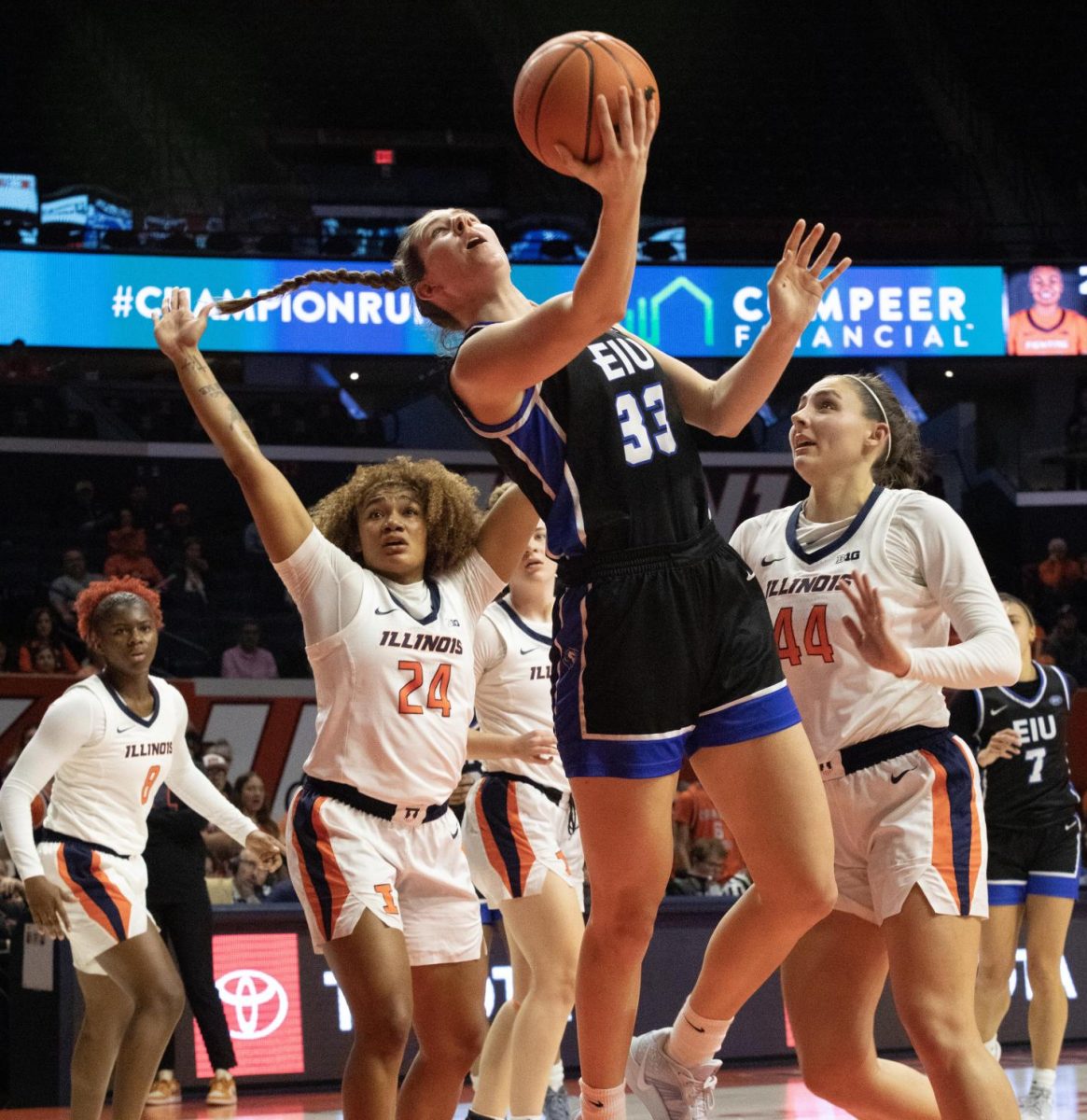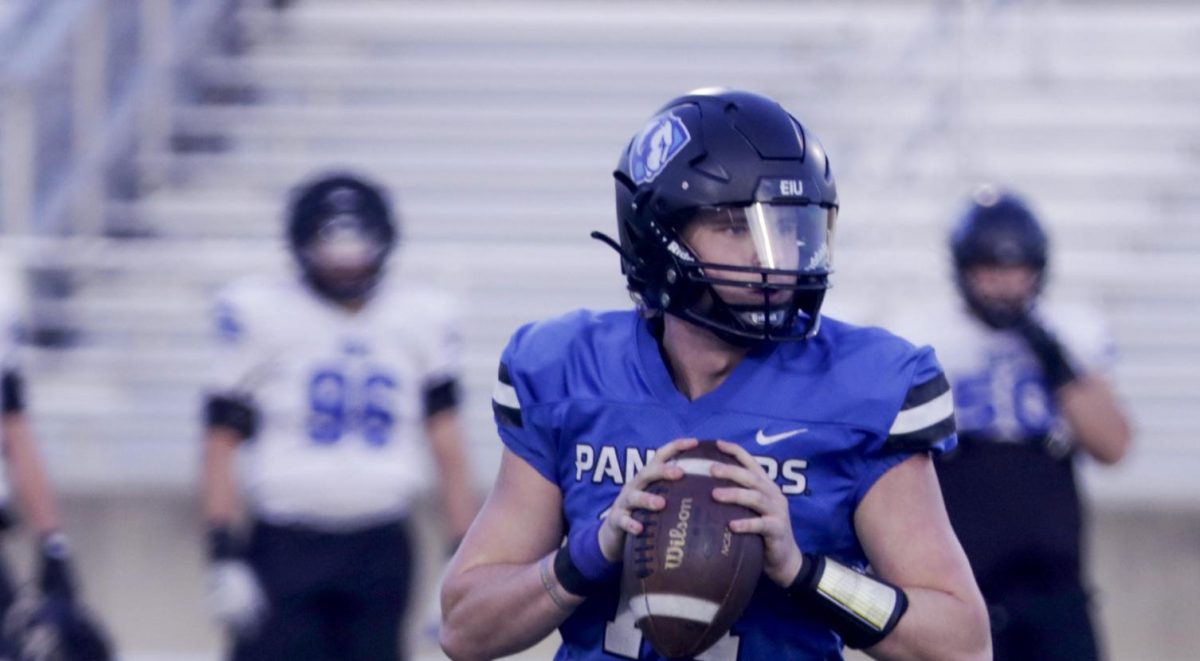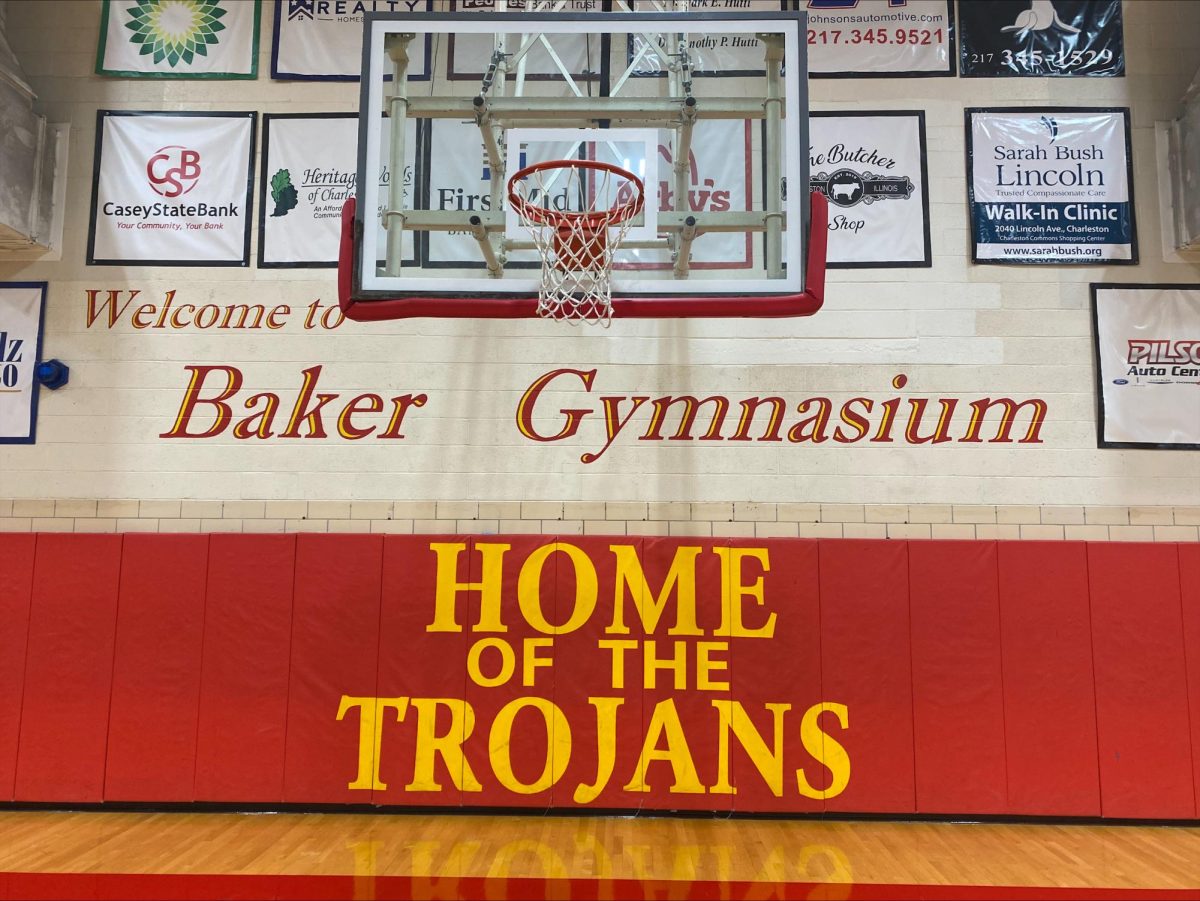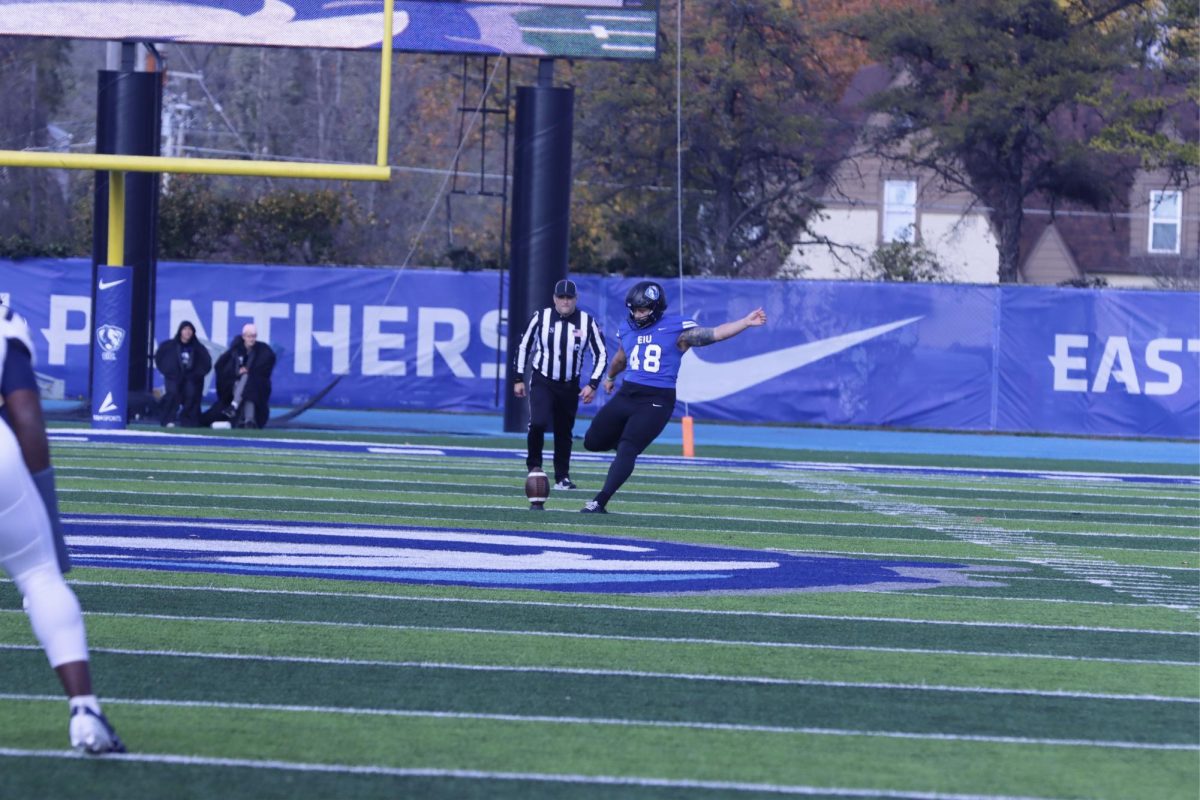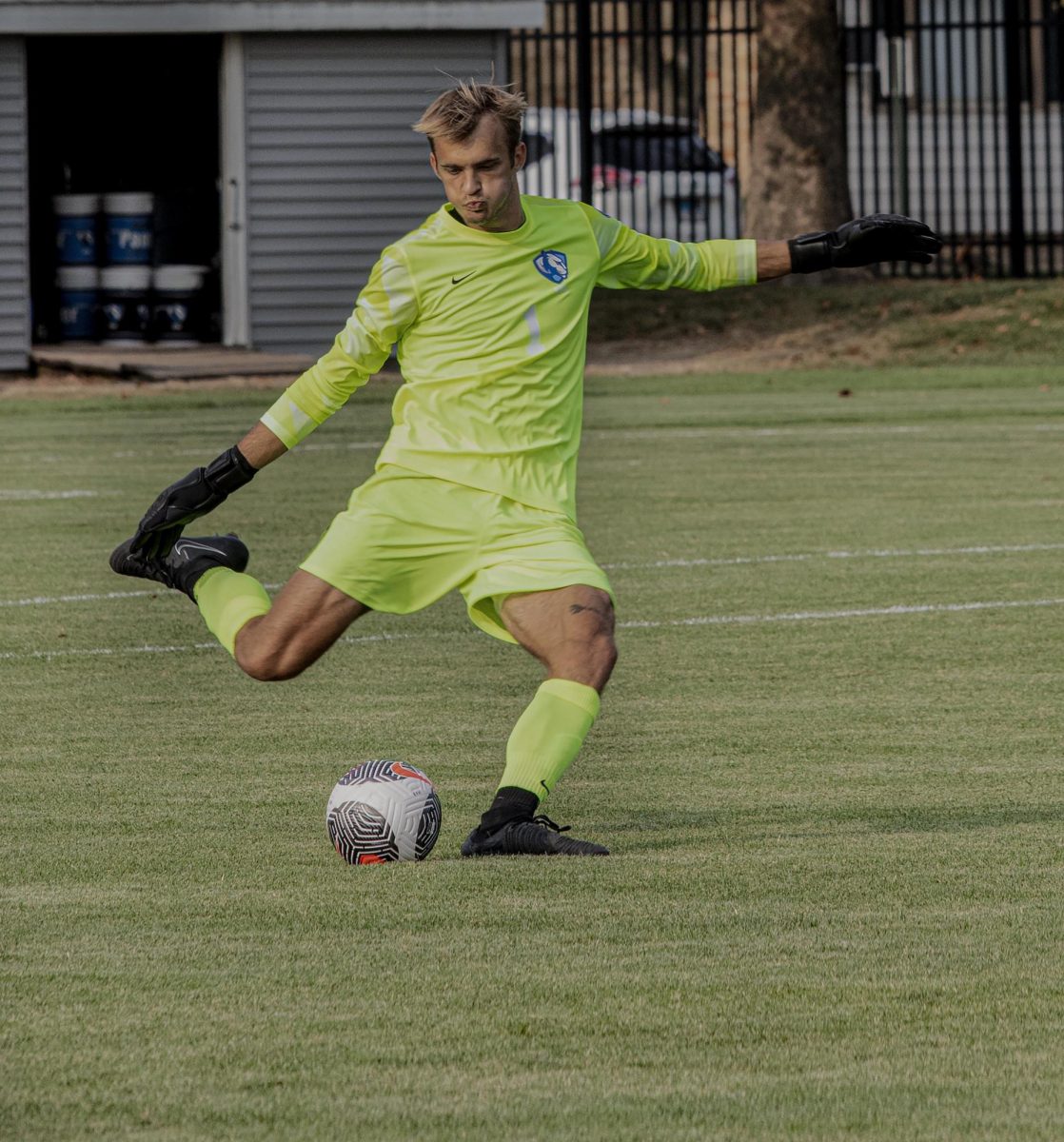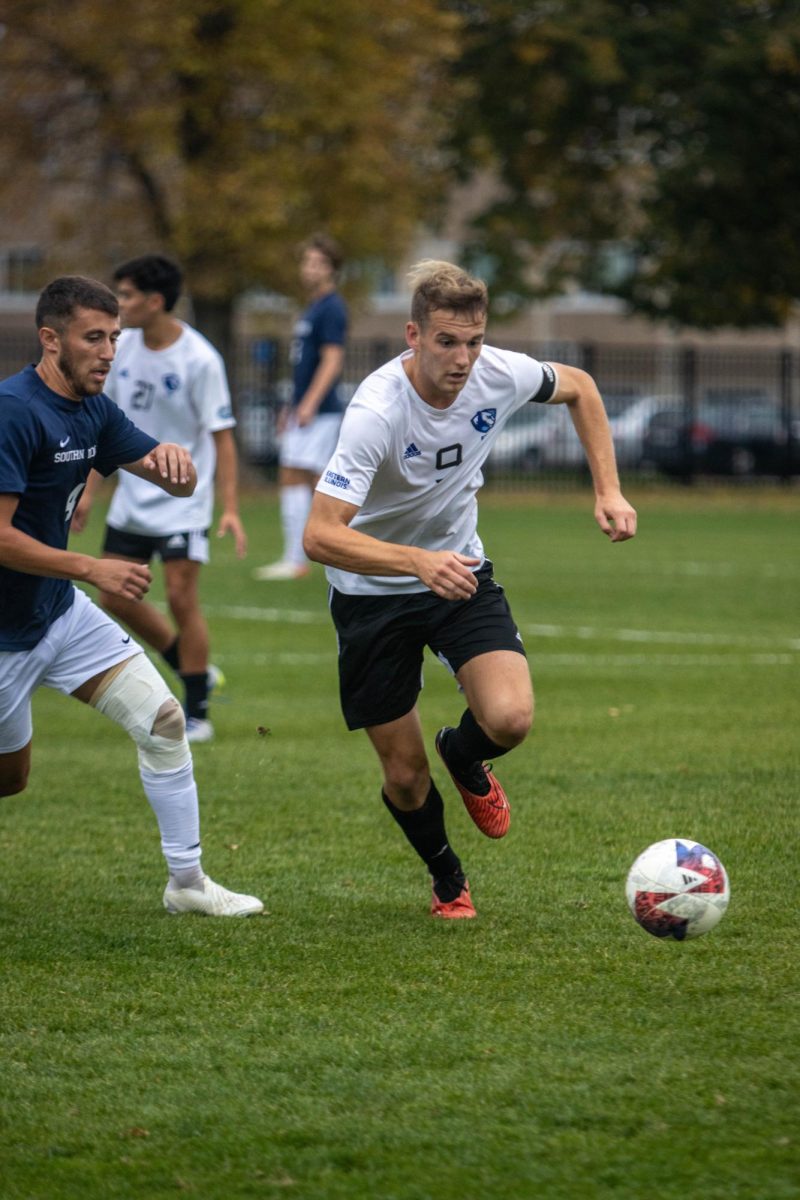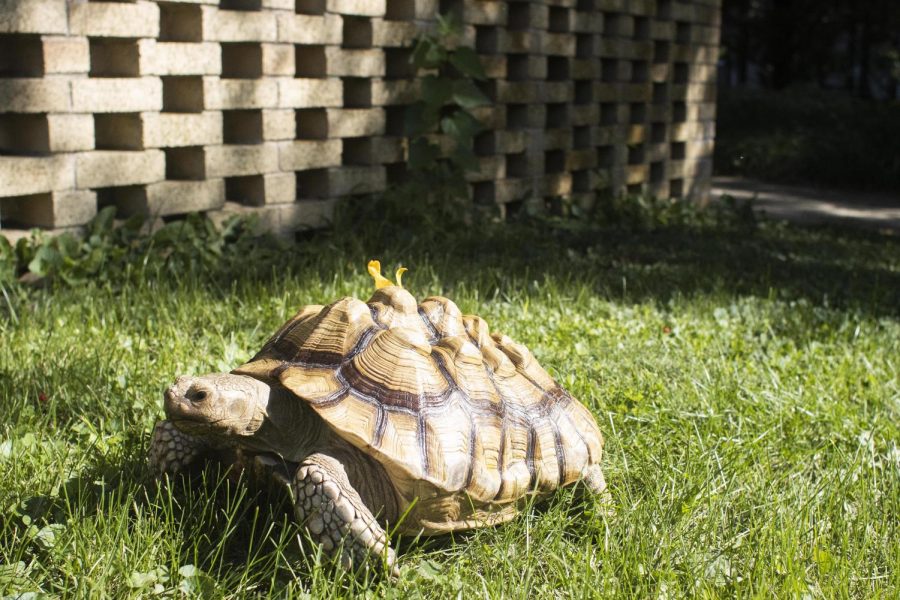Budika: The secret tortoise in the Secret Garden
Budika the African Spurred tortoise, basks in the sun on Tuesday afternoon behind the greenhouse.
September 27, 2022
For the last year, Eastern’s biology department has been keeping a secret within the Secret Garden and the H.F. Thut Greenhouse. Her name is Budika, and she is a 15 year old African Spurred Tortoise.
Budika was adopted by Cassi Moody-Carpenter, the biological sciences stockroom and building manager, almost four years ago and has been visiting and living at Eastern since last fall semester. Moody-Carpenter said she adopted Budika after Budika’s previous owners contacted Eastern’s Herpetology Club to surrender her.
“I adopted her just about four years ago, the herpetology club, people will call in and be like, ‘Okay, we need to find a home for this animal. The owner can’t take care of it or whatever,’” Moody-Carpenter said. “And basically she, I think, had outgrown her home. And so they were trying to find a home for her, and I said, ‘Yeah, I’ll take her’ and didn’t look at what kind of tortoise she was or anything. They just sent me a picture and I was like, ‘Yes, I want her.’ And then I found out she’s a Sulcata, which they get huge and live forever. So I had her at home and I just brought her [on campus] because of everything that we’ve been going through in the last five years in this department. And we need something uplifting.
The African Spurred Tortoise, also known as a Sulcata Tortoise’s average lifespan is over 70 years, and their average size ranges from 18 to 30 inches long and 80 to 150 pounds.
However, Budika is small for her species despite being full grown, which Moody-Carpenter theorizes came from a lack of proper nutrients.
Plus, Budika has a deformity to her shell known as “pyramiding.”
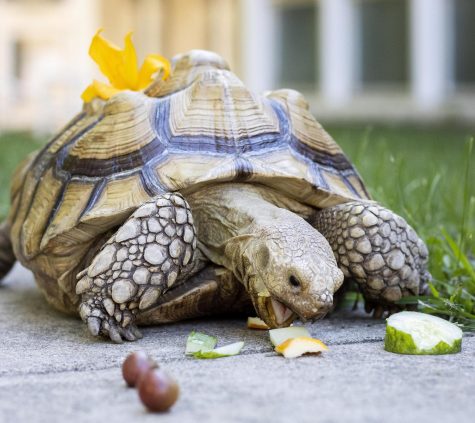
“She has some shell deformities known as ‘pyramiding,’” Moody-Carpenter said. “This occurs when the improper light, nutrients, humidity are provided for a growing tortoise, which is why it is very important to fully educate yourself about reptile husbandry before committing to one of these animals.”
Moody-Carpenter, with the help of Budika, spreads awareness through her shell deformity.
“So I kind of have her as a public service announcement for people to get reptiles and to let them know, they do have a lot of really specific requirements for husbandry supply, heat, moisture and nutrients,” Moody-Carpenter said. “And probably when she was little something was off, and that’s why her shell looks like that. And she should actually be a lot bigger, too. But I mean, it looks neat the pyramids, but it’s technically not what she’s supposed to look like.
Even with shell deformities, that does not stop Budika from enjoying walks and meeting new people.
“If anybody wants to take her for a walk, that’s a big thing because she loves to get out and walk,” Moody-Carpenter said. “We keep her in the greenhouse courtyard, but that’s just not enough for her sometimes. So there was one day I came up to the fence, and she literally had her leg [up on the gate]. And that was the most pathetic thing. It was just like, ‘Give me a break.’ I swear Monday when I went in there she literally started running towards the gate thinking she was going to get out.”
With Budika’s friendliness and curiosity, she will run up to strangers and friends alike.
“Her curiosity has helped her make many friends, maybe scare a few at first, in the department,” Moody-Carpenter said. “She has strolled into Dr. Meiners office, student offices, the greenhouse space several times. She always ran to see Dr. Yordanov while he was tending his sunflowers over the summer. Our greenhouse manager Sharon Dubosky is regularly stalked by Budika while she is working in the greenhouse or the courtyard. Recent graduate Bella Duco fell in love with her as soon as she saw her because she has a pet tortoise back at home.”
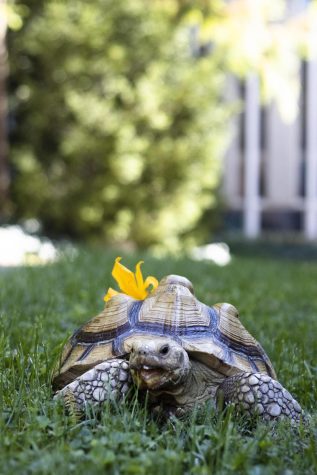
Budika’s curiosity does not stop at just people.
“She’s funny, so she’s really curious,” Moody-Carpenter said. “If you put something new in an area she just runs up to it like ‘what is that? Can I knock it over? What can I do?’ It’s a thing and she’s just something else.”
Along with a curious personality, Budika has also been known to have an attitude.
“I’ve had that happen several times,” Moody-Carpenter said. “She just kind of throws a fit, especially if she’s not ready to be put up and put her in her pen she’s just not happy.”
Budika’s name originates from Boudica, a queen of the Iceni tribe in Celtic Britons around AD 60. Boudica was reported to have led an uprising against the Roman Empire, according to Roman stories.
“Actually, my friend gave me that name… it was a Celtic warrior,” Moody-Carpenter said. “She was a woman, and she helped drive off the Romans back and so that’s kind of where the name comes from.”
Moody-Carpenter brought Budika to the biology department because prior to COVID-19 the biology department has hosted many animals.
“Well, we had a 30 pound Python, and her name was Pearl,” Moody-Carpenter said. “Very loving, but snakes kind of freaked me out… She’d just be hanging out on somebody’s shoulders… Sometimes it’s people’s pets. I mean, we’ve had bearded dragons, Ball Pythons. There was a frog. I think at one point, some kind of weird big frog. And then there was a painted turtle, and then we had a couple different bearded dragons and then a black rat snake [Buster], we did have a copperhead for a while.
For anyone wanting to meet Budika, they can contact Moody-Carpenter at cjmoody2@eiu.edu, or can meet Budika at Herpetology Club meetings.
Madelyn Kidd can be reached at 581-2812 or at dennewsdesk@gmail.com.






